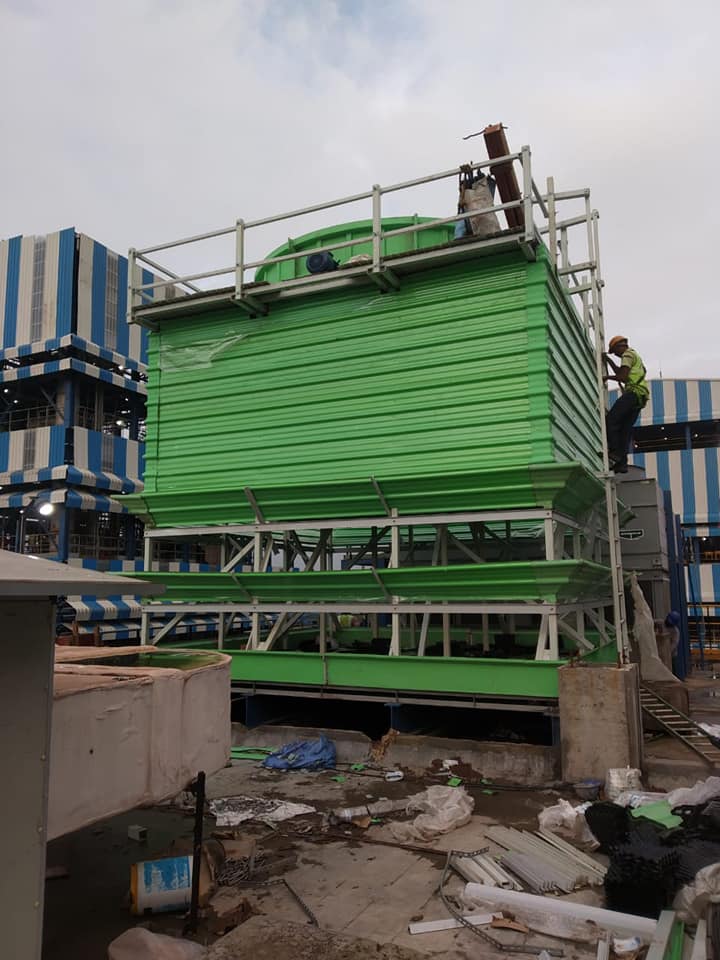Forced draft
In forced draft cooling towers, air is “pushed” through the tower from an inlet to an exhaust. A forced draft mechanical draft tower is a blow-through arrangement, where a blower type fan at the intake forces air through the tower. The forced draft cooling towers have certain disadvantages:
1. The blower forces outside air into the tower creating high entering and low exiting air velocities. The low exiting velocity of warm moisture laden air has the tendency to get re-sucked by the blower fan. This increases the apparent wet bulb temperature, and the cooling tower ceases to give the desired approach.
2. A Forced draft Cooling Tower can only be square or rectangular shaped. Forced draft arrangement always has a fan on the side. Due to this the cooling tower cannot be bottle shaped. Further, due to this characteristic, the water distribution system cannot be that of a sprinkler form. This results in inefficient water distribution.
3. It is difficult to maintain this type of a cooling tower because of the inaccessibility of the fills. Cold water basin is covered and difficult to access.
4. Pressurized upper casing is more susceptible to water leaks than the induced draft styles.
5. A forced draft design typically requires more motor horsepower typically double that of a comparable induced draft counter-flow cooling tower.
6. With the fan on the air intake, the fan is more susceptible to complications due to freezing conditions.
The forced draft benefit is its ability to work with high static pressure. They can be installed in more confined spaces and critical layout situations. These can be used for indoor applications and ducted to outside of the building
